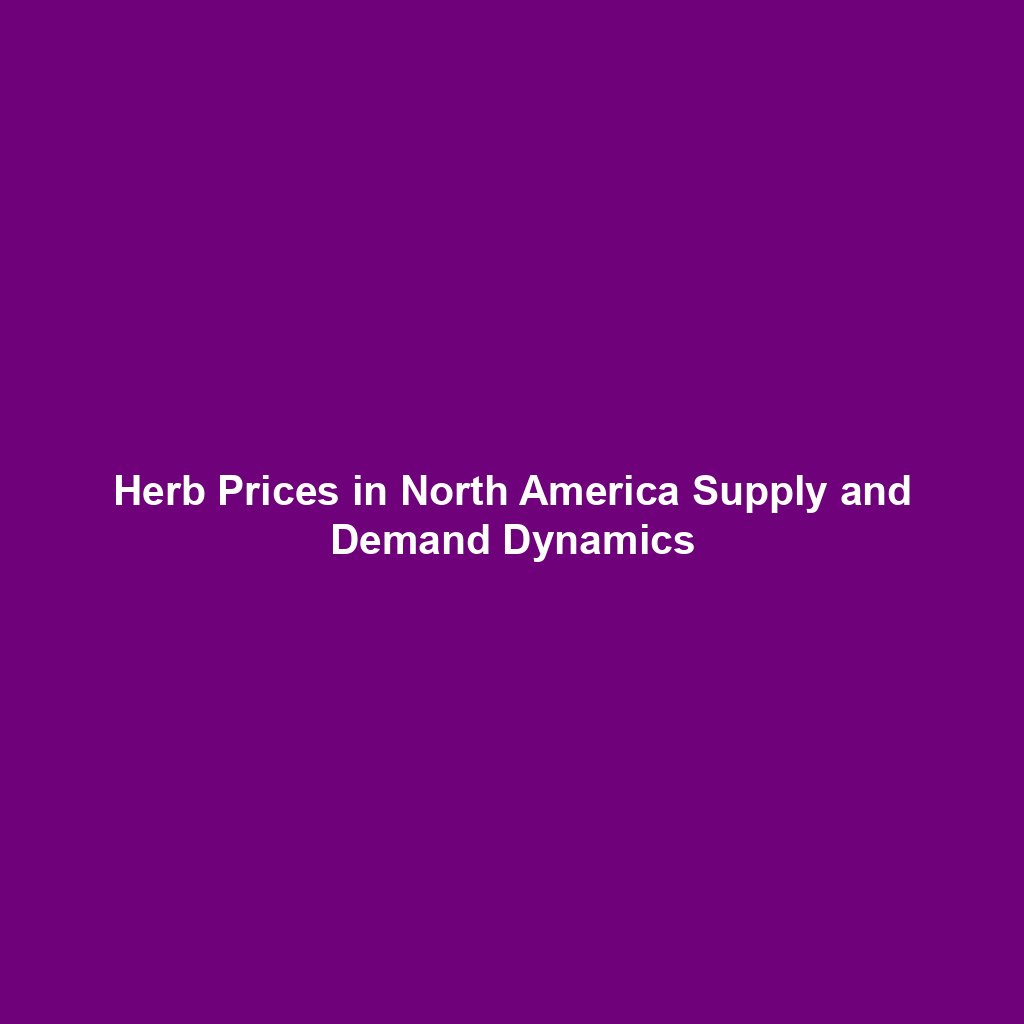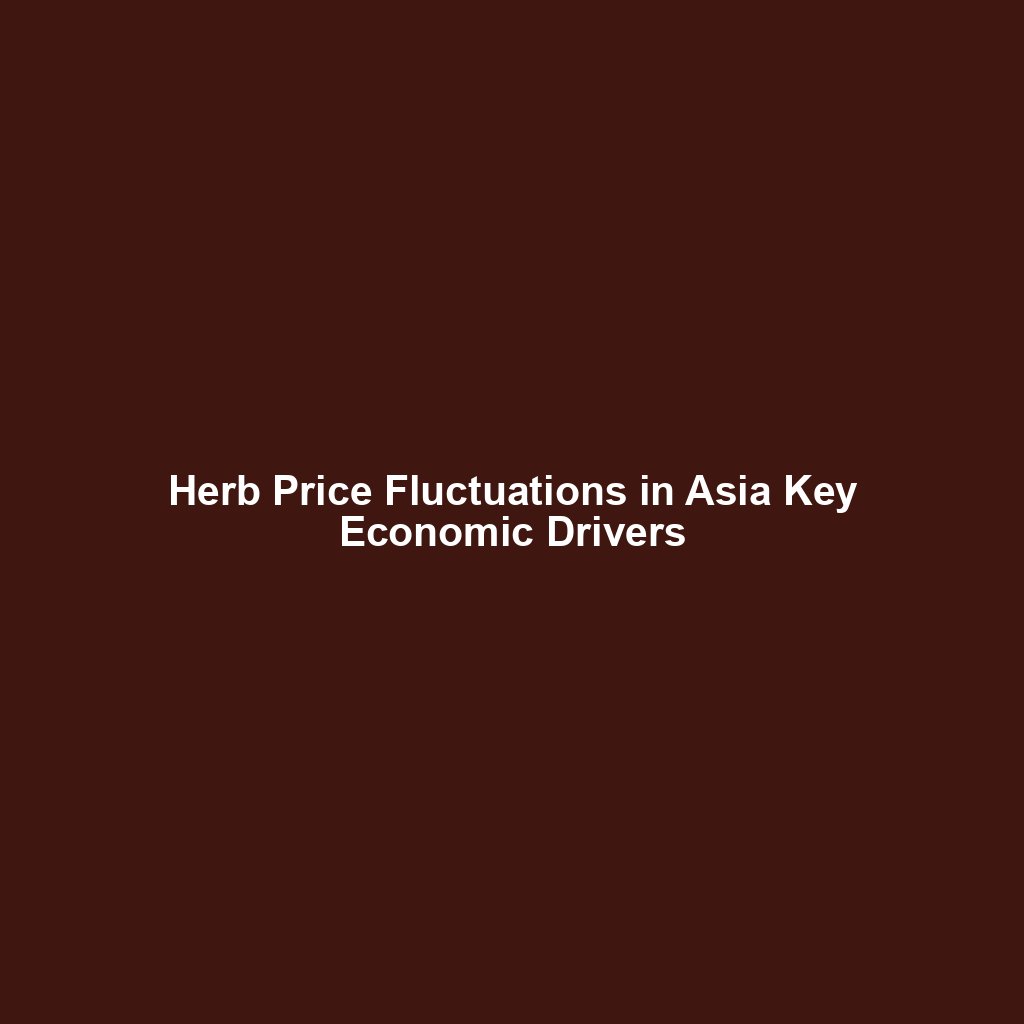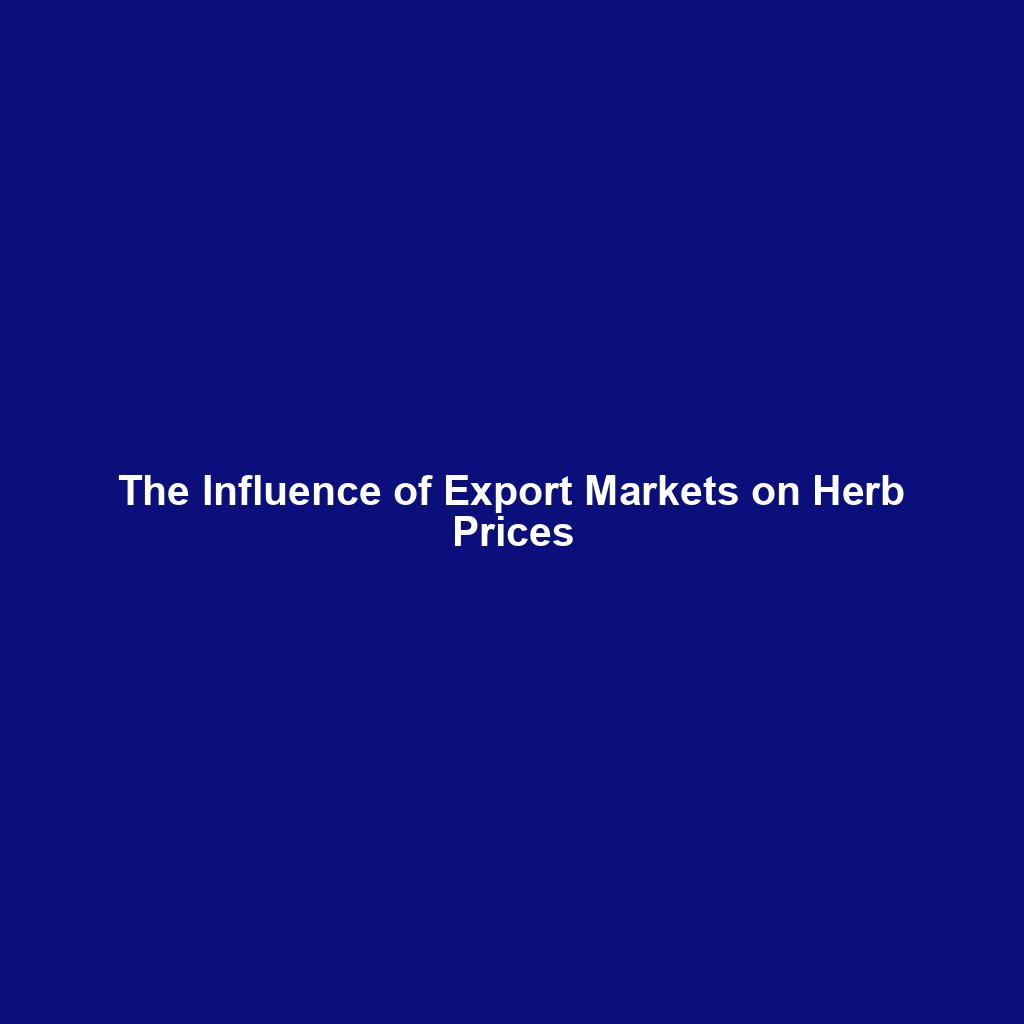
Herb Prices in North America Supply and Demand Dynamics is a topic of growing importance as the demand for herbs continues to rise across various sectors, including culinary, medicinal, and cosmetic industries. Understanding the factors that influence herb prices is crucial for stakeholders ranging from farmers and distributors to retailers and consumers. This article delves into the complexities of herb pricing, examining the supply and demand dynamics that shape the market in North America.
Chapter 1: The Supply Side of Herb Pricing
The supply of herbs in North America is influenced by a multitude of factors, including agricultural practices, climate conditions, and international trade policies. The cultivation of herbs requires specific conditions, and any changes in these conditions can significantly impact the supply chain.
1.1 Agricultural Practices and Innovations
Modern agricultural practices have evolved to include advanced techniques such as hydroponics, vertical farming, and organic cultivation. These innovations have allowed farmers to increase yield and improve the quality of herbs. However, the adoption of these practices varies widely across the region, leading to disparities in supply. For instance, while some areas have embraced organic farming, others still rely on traditional methods, which can affect both the quantity and quality of herbs produced.
Moreover, the use of genetically modified organisms (GMOs) and pesticides remains a contentious issue. While GMOs can enhance resistance to pests and diseases, they also raise concerns about health and environmental impacts. The choice of farming methods can thus influence the supply of herbs, affecting their availability and price.
1.2 Climate and Environmental Factors
Climate change poses a significant threat to herb cultivation. Unpredictable weather patterns, such as droughts, floods, and temperature fluctuations, can disrupt the growing season and reduce yields. For example, a prolonged drought can lead to water scarcity, affecting the growth of water-intensive herbs like basil and mint.
Additionally, environmental factors such as soil quality and biodiversity play a crucial role in herb cultivation. Degradation of soil quality due to over-farming or pollution can lead to reduced yields and increased production costs. Efforts to maintain soil health and promote sustainable farming practices are essential to ensuring a stable supply of herbs.
1.3 International Trade and Import Policies
North America’s herb market is not isolated; it is part of a global network of trade. Import policies and international trade agreements can significantly impact the supply of herbs. For instance, tariffs and trade restrictions can limit the import of certain herbs, leading to supply shortages and increased prices.
Conversely, favorable trade agreements can enhance the availability of exotic herbs that are not typically grown in North America. However, reliance on imports also exposes the market to global supply chain disruptions, such as those caused by geopolitical tensions or pandemics.
Chapter 2: The Demand Side of Herb Pricing
The demand for herbs in North America is driven by various factors, including consumer preferences, health trends, and cultural influences. Understanding these demand dynamics is essential for predicting price fluctuations and market trends.
2.1 Consumer Preferences and Health Trends
In recent years, there has been a growing consumer preference for natural and organic products, including herbs. This trend is driven by increasing awareness of health and wellness, as well as concerns about the environmental impact of synthetic products. As a result, the demand for organic herbs has surged, often leading to higher prices due to limited supply.
Moreover, the popularity of certain diets, such as veganism and plant-based eating, has increased the demand for herbs used in these culinary practices. Herbs like cilantro, parsley, and thyme are staples in many plant-based recipes, contributing to their rising demand.
2.2 Cultural and Culinary Influences
North America’s diverse cultural landscape has a significant impact on herb demand. The influence of various cuisines, such as Mexican, Italian, and Asian, has popularized the use of specific herbs. For example, the growing popularity of Mexican cuisine has increased the demand for cilantro and oregano.
Additionally, the rise of food tourism and culinary experimentation has led to a greater appreciation for exotic herbs. Chefs and home cooks alike are exploring new flavors, driving demand for herbs that were previously less common in North American kitchens.
2.3 Economic Factors and Consumer Spending
Economic conditions also play a crucial role in herb demand. During periods of economic growth, consumers are more likely to spend on premium and specialty herbs. Conversely, during economic downturns, there may be a shift towards more affordable options, affecting the overall demand for high-end herbs.
Furthermore, changes in disposable income and consumer confidence can influence purchasing decisions. As consumers become more conscious of their spending, they may opt for herbs that offer the best value for money, impacting the demand for different varieties.
Conclusion
The dynamics of herb prices in North America are shaped by a complex interplay of supply and demand factors. Agricultural practices, climate conditions, and international trade policies influence the supply side, while consumer preferences, cultural influences, and economic conditions drive demand. Understanding these dynamics is essential for stakeholders to navigate the market effectively and make informed decisions.
As the demand for herbs continues to grow, it is crucial for the industry to adopt sustainable practices and adapt to changing consumer preferences. By doing so, North America can ensure a stable and thriving herb market that meets the needs of its diverse population.





